BRAZILIAN JIU-JITSU HISTORY & THE GRACIE CONNECTION
When the days of the Samurai came to an end, the gun replaced the sword, and new sportive ways to practice martial arts were developed. Eventually, in Japan many different variations of Jiu-Jitsu took shape, including Karate, Aikido, and Judo. But these arts were missing essential pieces of what the complete art of Jiu-Jitsu originally held.
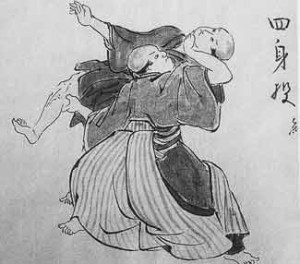
A historical Japanese painting depicting ancient Edo warriors practicing the art of Judo.
This lack of reality created years of confusion in the martial arts community, a confusion that legendary Bruce Lee would later refer to as the ‘classical mess’. Bruce Lee was actually a student of Judo and did many studies on grappling while he was alive. He criticized traditional martial arts as being ineffective. The more traditional combat schools were simply practicing techniques no longer suitable for modern day combat, and with no way to safely test them, practicing these arts became like swimming without water.
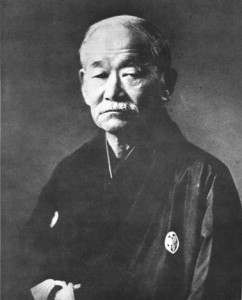
Kano Jigoro – founder of Judo
It wasn’t until the sport art of Judo and the combat art of Jiu-Jitsu were introduced to the Gracie family in Brazil that the real art of Jiu-Jitsu would be brought to life again. Japanese Jiu-Jitsu (practiced as Judo) was introduced to the Gracie family in Brazil around 1914 by Esai Maeda, who was also known as Conde Koma. Maeda was born in 1878, and became a student of Judo (Kano’s Jiu-Jitsu) in 1897. He was a champion of Jiu-Jitsu and a direct student of Kano Jigoro, at the Kodokan in Japan. Kano Jigoro is considered the founder of Judo which derived from early forms of Jiu Jitsu used in battle.
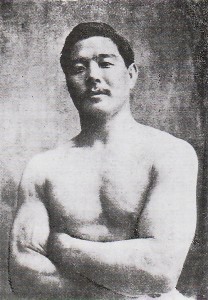
Maeda Mituyo
In 1914, Maeda was given the opportunity to travel to Brazil as part of a large Japanese immigration colony. In Brazil, in the northern state of Para, he befriended Gastão Gracie, an influential businessman, who helped Maeda get established. To show his gratitude, Maeda offered to teach traditional Japanese Jiu-Jitsu to Gastão’s oldest son, Carlos Gracie. Carlos learned for a few years and eventually passed his knowledge to his brothers.
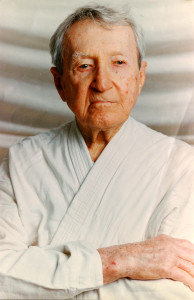
Carlos Gracie
Helio Gracie, the youngest son of Gastão and Cesalina Gracie’s eight children (three were girls), was always a very physically frail child. He would run up a flight of stairs and have fainting spells, and no one could figure out why.
At age fourteen, he moved in with his older brothers who lived and taught Jiu-Jitsu in a house in Botafogo, a borough of Rio de Janeiro. Following doctor’s recommendations, Helio would spend the next few years limited to only watching his brothers teach.
One day, when Helio was 16 years old, a student showed up for class when Carlos was not around. Helio, who had memorized all the techniques from watching his brothers teach, offered to start the class. When the class was over, Carlos showed up and apologized for his delay. The student answered, “No problem. I enjoyed the class with Helio very much and, if you don’t mind, I’d like to continue learning from him.” Carlos agreed, and Helio became an instructor.
THE BIRTH OF GRACIE JIU-JITSU
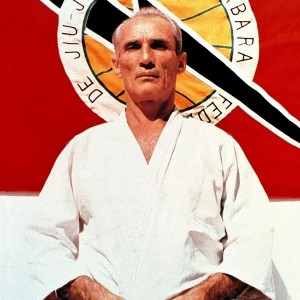
Helio Gracie
Helio soon realized that due to his frail physique, most of the techniques he had learned from watching Carlos teach were particularly difficult for him to execute. Eager to make the techniques work for him, he began modifying them to accommodate his weak body. Emphasizing the use of leverage and timing over strength and speed, Helio modified virtually all of the techniques and, through trial and error, created Gracie/Brazilian Jiu-Jitsu.
In order to prove the effectiveness of his new system, Helio openly challenged all the reputable martial artists in Brazil. He fought 18 times, including matches against onetime world heavyweight wrestling champion, Wladek Zbyszko and the #2-ranked Judoka in the world at the time, Kato, whom Helio choked unconscious in six minutes. His victory against Kato qualified him to enter the ring with the world champion, Masahiko Kimura, the best Jiu-Jitsu fighter Japan has ever produced, and who outweighed Helio by almost 80 pounds. Kimura won the match, but was so impressed with Helio’s techniques that he asked Helio to go teach in Japan claiming the techniques Helio presented during their bout did not exist in Japan. It was the recognition by the world’s best to Helio’s dedication to the refinement of the art.
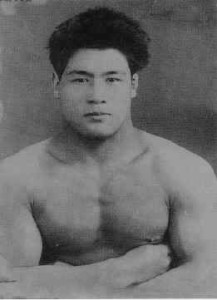
Mashiko Kimura
At 43 years old, Helio and former student, Waldemar Santana, set the world record for the longest uninterrupted no-holds-barred fight in history when they fought for an incredible 3 hours and 40 minutes!
Widely regarded as the first sports hero in Brazilian history, Helio also challenged boxing icons Primo Carnera, Joe Louis, and Ezzard Charles. They all declined.
A dedicated family man who exemplified a healthy life-style he was the epitome of courage, discipline, determination, and an inspiration to people everywhere. A modern-day legend, Helio Gracie gained international acclaim for his dedication to the dissemination of the art and is recognized as the creator of Gracie/Brazilian Jiu-Jitsu.
Helio Gracie lived to be 95 years old, from October 1, 1913 to January 29, 2009. He held a 10th degree red belt (Grandmaster) in Brazilian Jiu-Jitsu and a 6th degree black belt in Judo. Helio had four sons, Royler, Rolker, Royce and Robin and two daughters, Rerika and Ricci. His family had grown with many other black belts down to his grandchildren.
The UFC, Royce Gracie, and Brazilian Jiu Jitsu
The UFC was created by Helio’s son, Rorion Gracie, in order to identify the best martial art/fighting discipline. When choosing who would represent Gracie Jiu Jitsu, Rickson Gracie was an ideal candidate since he was already well versed in Vale Tudo tournaments and highly experienced. But Rorion selected Royce Gracie, his younger brother. He was small and had an average stature. If Royce could win, then it would show the world that Gracie Jiu Jitsu was a highly effective fighting style no matter the size of the fighter or the opponent.
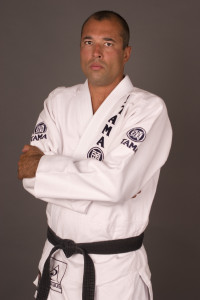
Royce Gracie
Royce Gracie won the first ever UFC 1 held in Denver, CO in November of 1993, which was a tournament style competition. He then continued his reign to UFC 2 and UFC 4. He won his last match in UFC 3, but had to forfeit before the semi-final match. He had a draw against Ken Shamrock in UFC 5. With the birth of UFC and what would eventually become MMA (mixed-martial arts), Royce demonstrated the effectiveness of Brazilian Jiu-Jitsu and how technique, knowledge, experience can overcome size and strength. He is considered to be one of the most influential figures in modern MMA and Jiu-Jitsu.
Brazilian Jiu Jitsu is considered one of the most required fighting disciplines that should accompany the arsenal of fighting styles for today’s premier MMA competitors; in addition to wrestling, Muay Thai, submission grappling, and boxing.
The Gracie Triangle
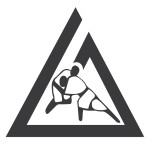
The Gracie Triangle is a trademark of the Gracie family jiu-jitsu heritage. It is used here just to provide a reference to their heritage.
The Gracie Triangle, the widely recognized symbol of the Gracie Academy, has evolved over the years. Today, it appears on the storefront of every martial arts school that is committed to teaching the techniques and philosophy of Gracie Jiu-Jitsu in its purest form.
The triangle represents the stable base possessed by a Gracie Jiu-jitsu master. Regardless of which side it rests on, the Gracie Triangle always has a strong base.
The three sides represent the mind, body, and spirit – the three components of Gracie Jiu-Jitsu mastery. The slight inclination near the top of the triangle forms the letter “G” for Gracie.
The two fighters on the inside represent all the practitioners of Gracie Jiu-Jitsu who seek to master themselves in mind, body, and spirit – on and off the mat.
note: photos displayed on this page are used only as a reference to the historical information noted. MHGJJ is not indicating any ownership or association of the photos/images and they are believed to be public domain.
